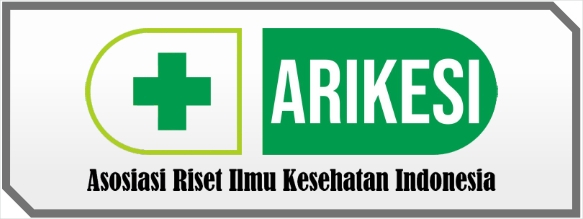Pengaruh Terapi Genggam Bola Karet terhadap Peningkatan Kekuatan Otot pada Pasien Stroke Non Hemoragik di RSUD Kardinah Kota Tegal
DOI:
https://doi.org/10.57213/naj.v2i3.369Keywords:
Muscle Weakness, Non-Hemorrhagic Stroke, Rubber Ball Graps TherapyAbstract
Non hemorrhagic stroke is a disorder caused by ischemia, thrombosis, embolism, and narrowing of the lumen so that blood flows to the brain stops. This type of stroke can have an impact on various body functions including muscle weakness. Rubber ball grip exercises can stimulate movement in the hands for gripping function so that it can restore brain control over weakened upper extremity muscles. This study aimed to describe the application of rubber ball grip exercises to upper extremity muscle strength in non-hemorrhagic stroke patients. The research design used a case study approach. Data collection was carried out on May 30 - June 1 2023 at Kardinah Hospital, Tegal City with 2 patients having a medical diagnosis of non-hemorrhagic stroke. Both patients experienced an increase in upper extremity muscle strength. Patient 1 during 3 days of therapy experienced a change in muscle strength from 4 to 5. In patient 2 after 3 days of therapy experienced a change in muscle strength from 3 to 4.. The results showed that subject 1 experienced an increase in muscle strength from 4 to 5, subject II experienced an increase in muscle strength from 3 to 4. patients with non-hemorrhagic stroke are used to do rubber ball grip therapy for 10-15 minutes per day within 3 days to stimulate weak muscle strength.
References
Alimul. (2013). Pengantar pendidikan keperawatan. Sagung Seto.
Chaidir, & Zuardi. (2014). Keperawatan medikal bedah: Asuhan keperawatan pada gangguan sistem respirasi. TIM.
Dewi. (2016). Gambaran faktor-faktor penyebab terjadinya stroke. Jurnal Kesehatan Andalas, 5(4), 436-444.
DINKES Kota Tegal. (2011). Profil kesehatan Kota Tegal. Pemerintah Kota Tegal.
Emban Patria Garrison, & Mutaqib. (2013). Mengenal dan memahami strok. Kata Hati.
Fahmi. (2015). Buku ajar keperawatan medikal bedah (Edisi ke-8, Volume 1). Salemba.
Gessal, & Angliadi. (2016). Pengaruh ROM terhadap peningkatan otot pada pasien stroke. Idea Nursing Journal, 3(1).
Indrawati, Lili, Wening Sari, & C. S. D. (2016). Care yourself stroke (Indriani, Ed.). Penebar Plus.
Kandou. (2013). Bagian ilmu bedah Fakultas Kedokteran. Universitas Sam Ratulangi.
Kowalk. (2017). Gambaran faktor-faktor penyebab terjadinya stroke. Jurnal Kesehatan Andalas, 5(4), 436-444.
Lingga. (2013). All about stroke: Hidup sebelum dan pasca stroke. PT Elex Media Komputindo.
Mayer, Welsh, & Kowalak. (2017). Buku ajar patofisiologi. EGC.
Muslihah, S. U. (2017). Asuhan keperawatan klien stroke non-hemoragik dengan hambatan mobilitas fisik di RS PKU Muhammadiyah Gombong. [Unpublished manuscript], STIKes Muhammadiyah Gombong, Program Studi DIII Keperawatan.
Mutaqqin, A. (2013). Asuhan keperawatan dengan klien gangguan sistem persarafan. Salemba Medika.
Oliviani, Y., Mahdalena, M., & Rahmawati. (2017). Pengaruh latihan range of motion (ROM) terhadap peningkatan otot ekstremitas atas pasien stroke. Jurnal Dinamika Kesehatan, 2, 1-10.
Perry, D. N. A., & Rohana, N. (2014). Pengaruh latihan range of motion pada ekstremitas atas dengan bola karet terhadap kekuatan otot pasien stroke. Proceeding Book, 143-152, RSUD Dr. H. Soewondo Kendal.
PPNI. (2017). Standar diagnosis keperawatan Indonesia: Definisi dan indikator. DPP PPNI.
PPNI. (2017). Standar intervensi keperawatan Indonesia. DPP PPNI.
Rahmadani, & Rustandi. (2019). Stroke: Kenali, cegah dan obati. Notebook.
RISKESDAS. (2018). Riset kesehatan. Badan Litbangkes Kementerian Kesehatan RI.
Ruhyanudin. (2012). Metode penelitian kesehatan. Rineka Cipta.
Schriger. (2012). Keperawatan medikal bedah. Nuha Medika.
Sihombing. (2019). Konsep dan penulisan dokumentasi asuhan keperawatan: Teori dan praktik. Graha Ilmu.
Sofwan, R. (2013). Stroke dan rehabilitasi pasca stroke. Bhuana Ilmu Popular.
Sulistiawan, A., & Husna, E. (2015). Pengaruh terapi aktif menggenggam bola terhadap kekuatan otot pasien stroke di RSSN Bukit Tinggi. Jurnal Kesehatan STIKes Prima Nusantara Bukit Tinggi, 7(1), 30-39.
Tumewah. (2016). Pengantar kebutuhan dasar manusia: Konsep dasar proses keperawatan. Salemba Medika.
World Health Organization. (2013). WHO STEPS prevalensi stroke: The WHO STEP approach to stroke surveillance.
Yustiana, & Ghofur. (2016). Tahapan pengkajian dalam proses keperawatan. EGC.
Downloads
Published
Issue
Section
License
Copyright (c) 2024 NAJ : Nursing Applied Journal

This work is licensed under a Creative Commons Attribution-ShareAlike 4.0 International License.













